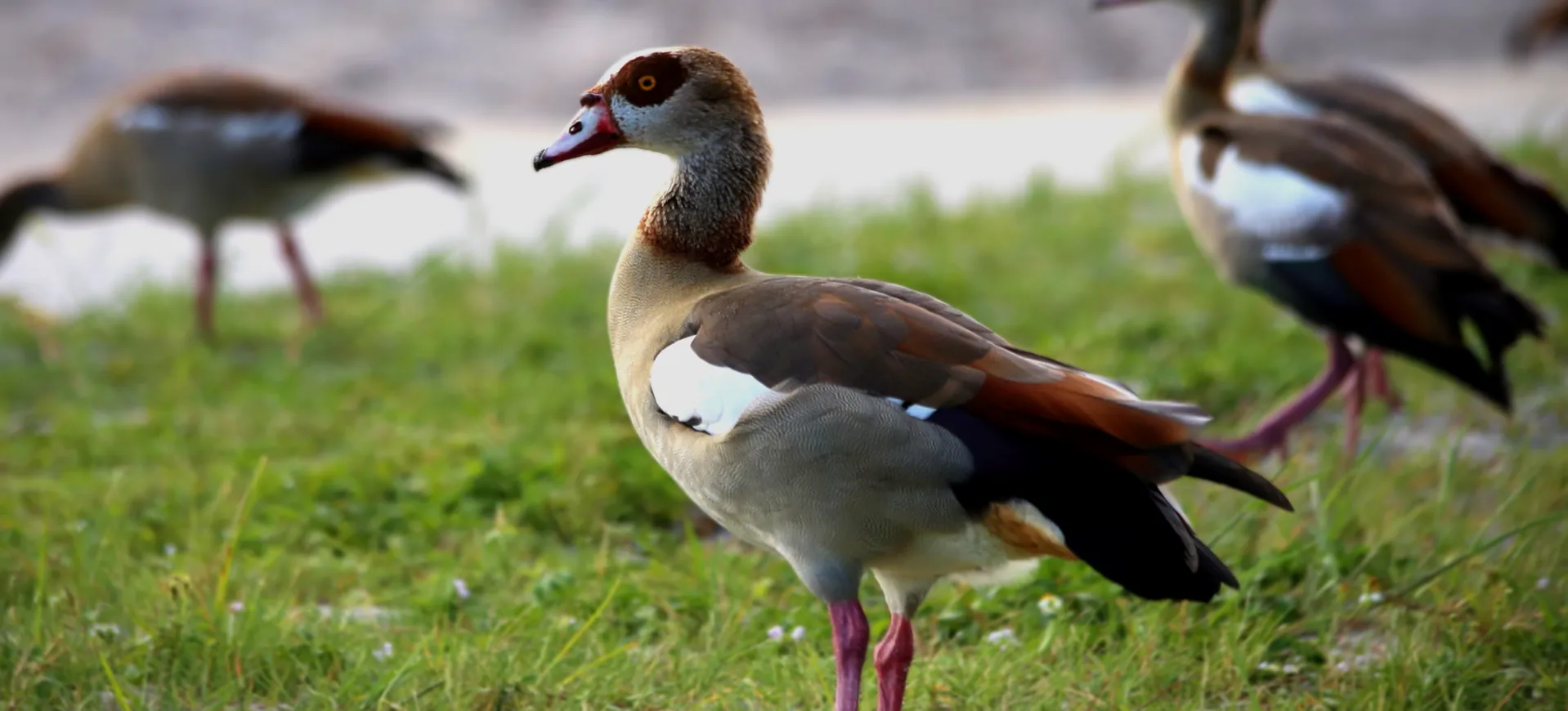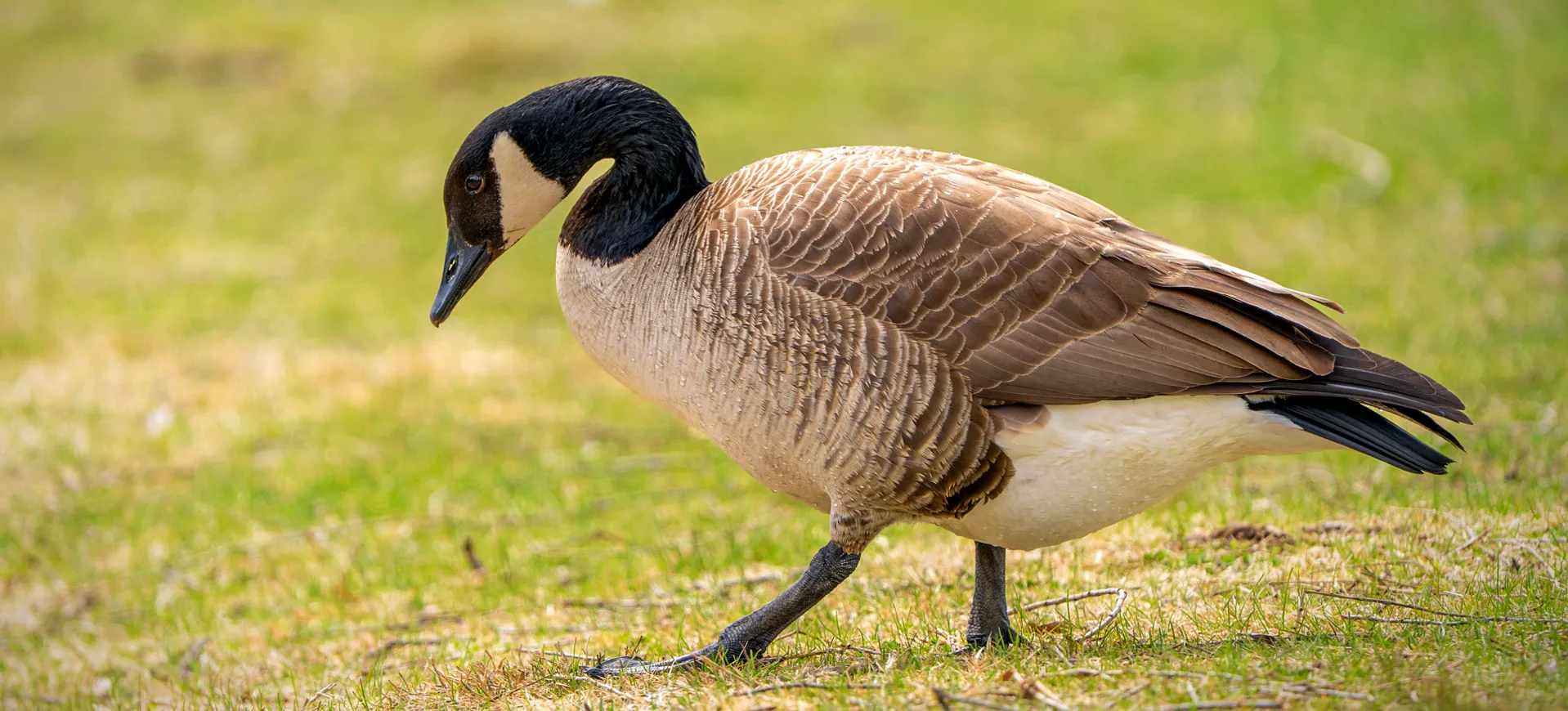Overview
The Wandering Whistling-Duck is a distinctive species of waterfowl known for its unique whistling call and wandering habits. It is medium-sized, with a long neck and legs and a stout body adapted for swimming and foraging in shallow waters. This duck has a predominantly brown plumage with conspicuous white streaks and a lighter underside, which becomes more pronounced during the breeding season. It is commonly found in freshwater wetlands, where it forms large, noisy flocks, often seen roosting on open water during the day and foraging at night.
The Wandering Whistling duck is known for its strong flying ability, often covering large distances during seasonal movements. Unlike many migratory species, these ducks do not follow a strict migratory path but move in response to changing water levels and food availability. This behavior has earned them the name ‘wandering,’ reflecting their unpredictable movements across their range. They are social birds, frequently found in groups, and their loud, distinctive whistling calls are a characteristic sound of their habitats.
Found predominantly in Southeast Asia and Australasia’s tropical and subtropical regions, the Wandering whistling duck is a species well-adapted to various wetland habitats. It thrives in natural swamps and marshes to man-made habitats like rice paddies and reservoirs. The adaptability of this species to different wetland types is a key factor in its widespread distribution and relative abundance in its natural range.
Taxonomy
Kingdom
Phylum
Class
Order
Family
Genus
Species
Type
Physical Description:
The Wandering Whistling duck has a distinctive physical appearance characterized by its long neck and legs that are longer than typical ducks. Its plumage is primarily brown with distinctive white streaks and a pale underside, which becomes more prominent during the breeding season. The bill is relatively short and dark, and the eyes are also dark, contrasting the lighter facial feathers. The legs and feet are grayish and well-adapted for swimming and walking in shallow water.
Adults typically exhibit little sexual dimorphism, meaning males and females appear similar in size and coloration. Their long legs trail behind during flight, and their rounded wings are noticeable. The duck’s body is streamlined for swimming, with a long tail often held up at an angle. The plumage of juveniles is duller than that of adults, and they lack the pronounced white streaking until they mature.

Lifespan: Wild: ~10 Years || Captivity: ~15 Years

Weight: Male: 1.2-1.5 lbs (550-700 g) || Female: 1.1-1.4 lbs (500-650 g)

Length: Male & Female: 21-23 inches (53-59 cm)

Height: Male & Female: 20-24 inches (50-60 cm)

Wingspan: Male & Female: 33-37 inches (85-95 cm)

Top Speed: 50 mph (80 km/h)
Characteristic:
Native Habitat:
The Wandering Whistling duck is native to various wetland habitats, primarily in Southeast Asia and Australasia. These habitats include freshwater swamps, marshes, lakes, and man-made environments like rice fields and reservoirs. The adaptability of this species to various wetland types is a key factor in its wide distribution. They prefer shallow waters where they can easily forage for food, and they are often found in areas with dense vegetation, which provides cover and nesting sites.
Warm, tropical, and subtropical climates with abundant water sources characterize their habitats. Water availability is a crucial factor in their distribution, as they rely on wetlands for feeding and breeding. Seasonal changes in water levels, such as those caused by monsoons, can influence their movements, leading them to migrate to areas with more favorable conditions. This mobility in response to environmental changes is a key aspect of their survival in the varied ecosystems they inhabit.
Climate Zones:
Biomes:
WWF Biomes:
Biogeographical Realms:
Countries:
Diet:
Diet & Feeding Habits:
The Wandering Whistling duck is omnivorous, with a diet that includes a variety of aquatic plants, seeds, and small aquatic animals. They are known to forage in shallow waters, using their long necks to reach food submerged in water or on the ground. They often feed on rice in agricultural areas, making them frequent visitors to rice paddies. At night, they are more active in foraging, taking advantage of the cover of darkness to avoid predators.
Their feeding habits are adaptable, allowing them to thrive in various environments. During the dry season, when water sources may become scarce, they travel to find suitable feeding grounds, often covering large distances. They dabble at the surface or upend in wetlands to reach deeper food sources. The diet of the Wandering Whistling-Duck plays a crucial role in seed dispersal and in controlling insect populations in their habitats.
Mating Behavior:
Mating Description:
Wandering Whistling-Ducks are monogamous, typically forming long-term pair bonds. The breeding season varies depending on the region and is often linked to water and food availability. In Australia, for example, breeding usually occurs during the wet season when water levels are high. During courtship, males display various behaviors, including head-bobbing and wing-flapping, to attract females.
Nesting usually occurs in dense vegetation near water, where the female lays a clutch of 8-12 creamy-white eggs. Both parents take turns incubating the eggs for about 30 days. The ducklings are precocial, relatively mature and mobile shortly after hatching. They follow their parents to water shortly after birth, where they learn to forage and swim.
Reproduction Season:
Birth Type:
Pregnancy Duration:
Female Name:
Male Name:
Baby Name:
Social Structure Description:
Wandering whistling ducks are highly social birds, often found in large flocks, particularly outside the breeding season. These flocks can consist of hundreds to thousands of individuals, providing safety in numbers against predators. They exhibit various social behaviors within flocks, including communal roosting and synchronized feeding. The structure of these groups can be quite fluid, with ducks joining and leaving as they move between different wetlands.
During the breeding season, pairs become more territorial and may separate from larger groups to nest and raise their young. Family groups, consisting of the parents and their offspring, can be seen together until the young are fully independent. The social nature of these ducks plays a crucial role in their survival, providing protection and enhancing their ability to locate food and suitable habitats.
Groups:
Conservation Status:
Population Trend:
The Wandering Whistling-Duck is considered the least Concerning by the IUCN, with a stable population trend. This status reflects the duck’s wide distribution and relatively large population size. While exact numbers are challenging to determine due to their nomadic nature, they are commonly observed in suitable habitats within their range. Their adaptability to various wetland environments also contributes to their stable status.
Despite their stable overall status, local populations can be affected by habitat loss and degradation, particularly in areas where wetlands are being drained for agriculture or urban development. Changes in water management practices, such as dam construction, can also impact their habitats. While not a significant concern, continuous monitoring of their population and habitat is essential to ensure long-term conservation.
Population Threats:
Habitat loss and degradation are the primary threats to the Wandering Whistling-Duck. The drainage of wetlands for agricultural or urban development can significantly reduce their available habitat. Pollution and changes in water quality also pose risks, particularly in regions where agricultural runoff is common. Additionally, hunting and egg collection in some areas can impact local populations.
Climate change poses a long-term threat, as changes in rainfall patterns and water availability can alter their habitats and migration patterns. Human disturbances, such as increased boating and recreational activities in wetlands, can also disrupt their breeding and feeding behaviors. While these ducks are adaptable, the cumulative effects of these threats could have more significant impacts if not addressed.
Conservation Efforts:
Conservation efforts for the Wandering Whistling-Duck primarily focus on habitat protection and management. This includes the establishment and maintenance of protected wetland areas, as well as sustainable water management practices that ensure the availability of suitable habitats. In some regions, efforts are made to restore and rehabilitate degraded wetlands, providing additional or improved habitats for these ducks.
Education and awareness programs are also important, helping to reduce disturbances and promote coexistence between humans and wildlife. International cooperation is essential as these ducks move across national borders. Organizations like the Ramsar Convention on Wetlands work globally to conserve and sustainably use important wetland habitats, benefiting the Wandering Whistling-Duck and countless other species.
Additional Resources:
Fun Facts
- The distinctive whistling call of these ducks can be heard over long distances, especially at night.
- Unlike many ducks, Wandering Whistling-Ducks have long legs, making them more adept at walking on land.
- They are one of the few duck species that roost on open water, lying low in the water with just their heads and necks visible.
- The nomadic nature of these ducks means they can appear in large numbers in unexpected places following changes in water availability.
- Their diet contributes to the health of wetlands by controlling insect populations and aiding in seed dispersal.
- Their long necks and legs give them a distinctive silhouette in flight, different from many other duck species.
- They are known to form mixed-species flocks with other types of waterfowl, especially when foraging.
- During the breeding season, their plumage becomes more vibrant, with the white streaks becoming more pronounced.
- Wandering Whistling-Ducks can cover large distances during their movements, making them excellent flyers.
- They play a vital role in their ecosystems as predators and prey, contributing to the complex food web of wetland habitats.



















































































